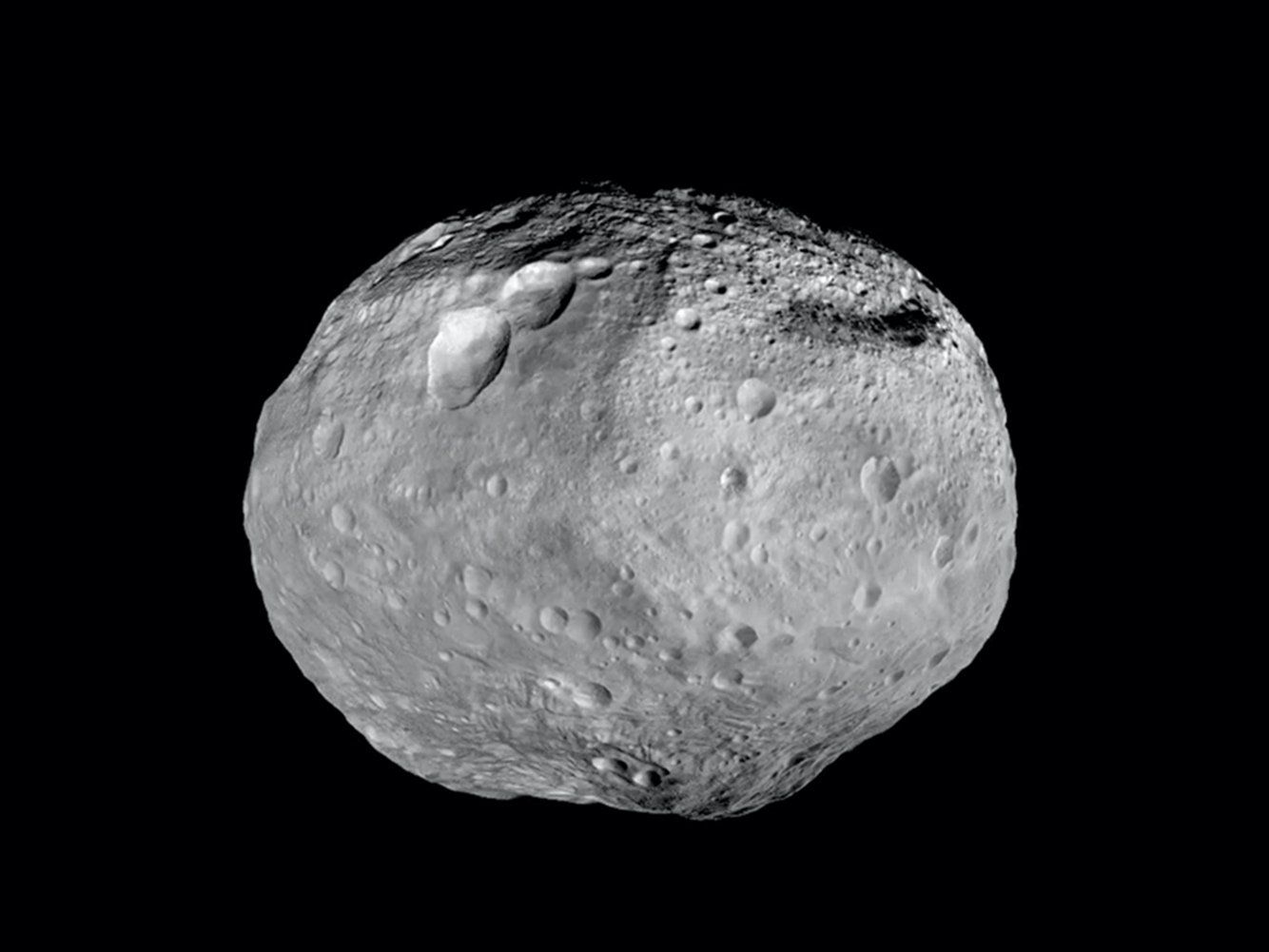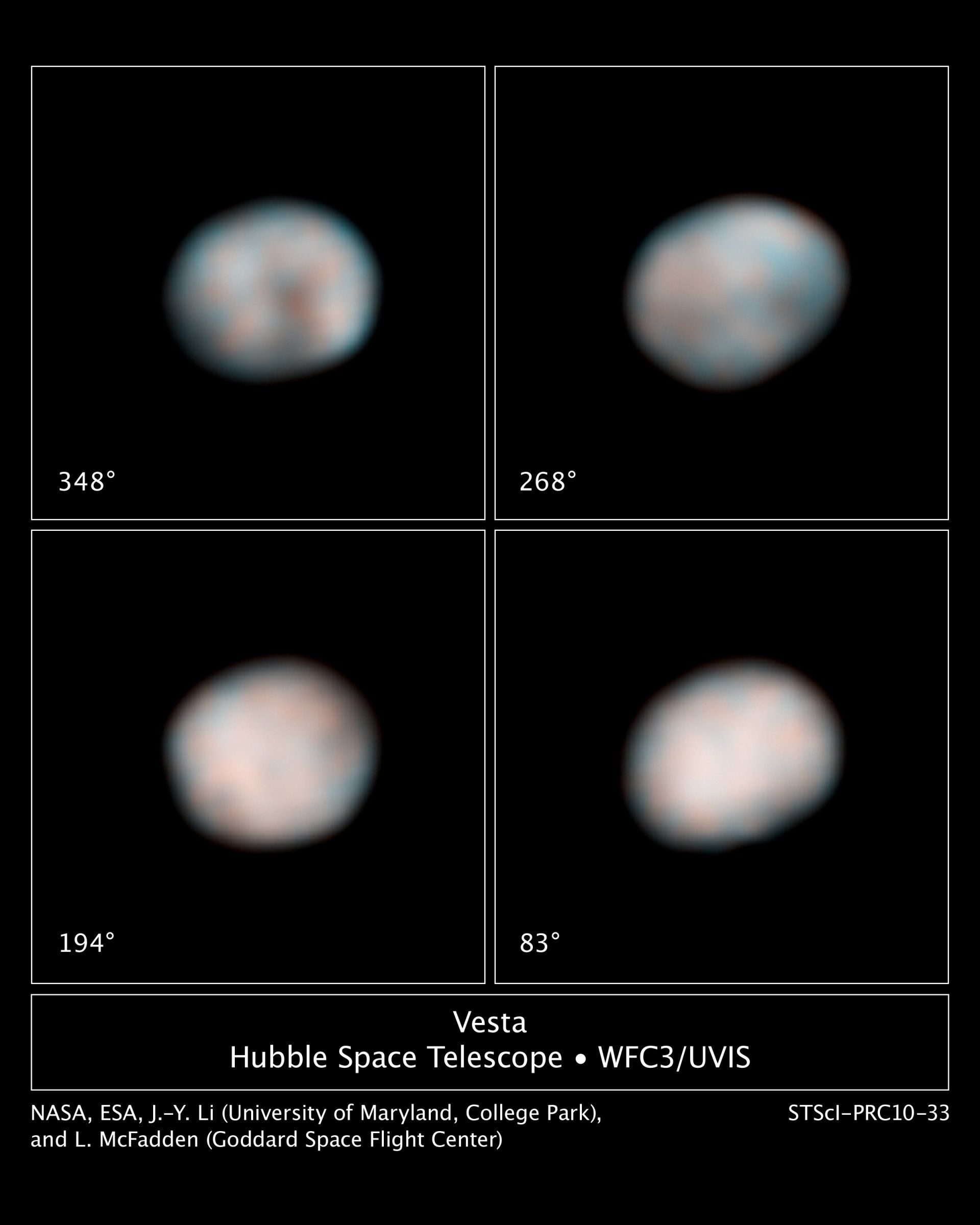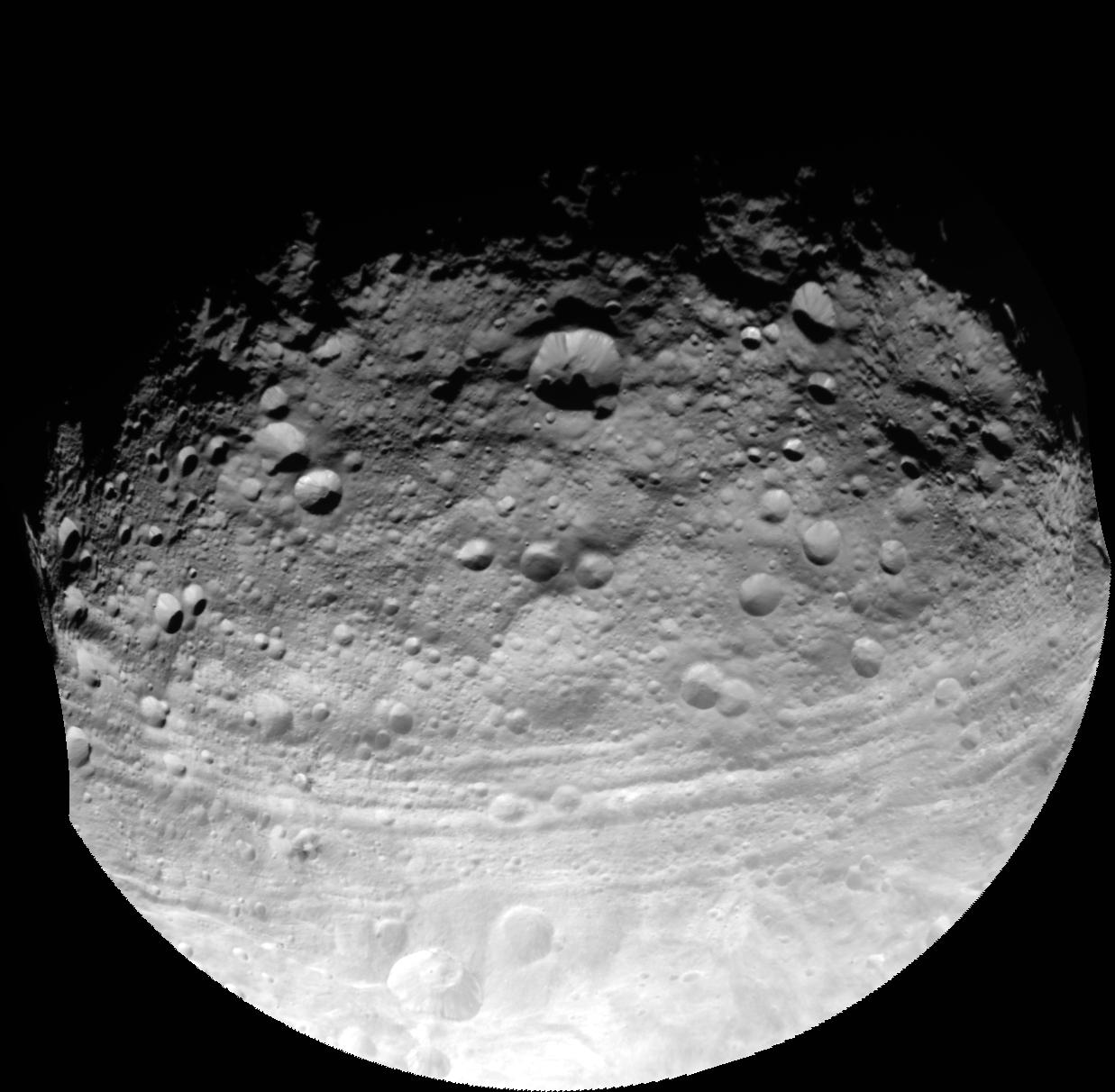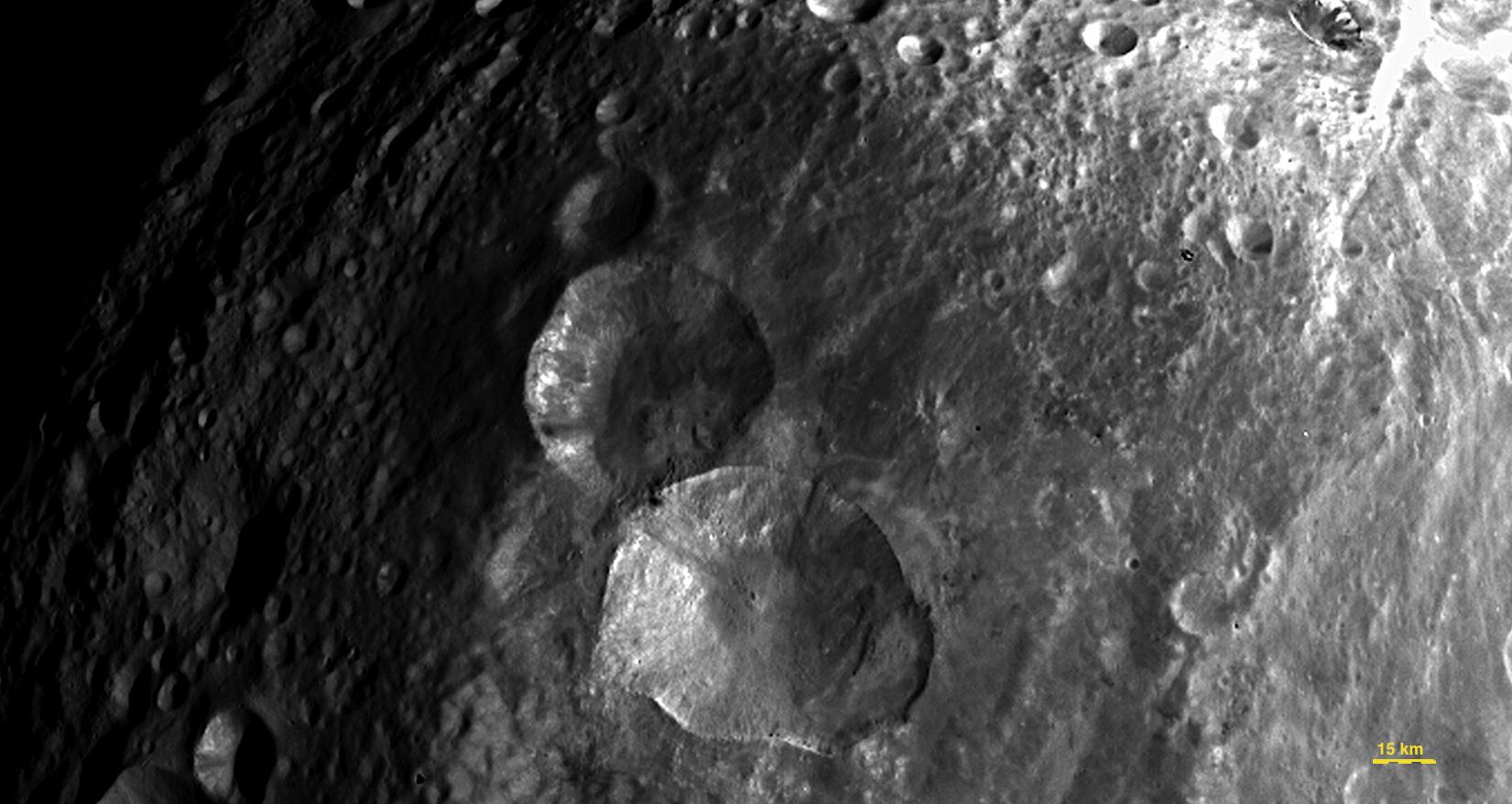This web page is created within BALTICS project funded from the European Union’s Horizon2020 Research and Innovation Programme under grant agreement No.692257.
Vesta
Vesta is the second most massive and largest object of the main asteroid belt. Its average diameter is 525 kilometers. Vesta is not round enough to be deemed as a dwarf planet. The asteroid fully orbits the Sun in a 3,6-year period. Vesta is located approximately 2,4 astronomical units away from the Sun. It has no known natural moon. One 24-hour day on Vesta is 5,3 hours long. Since the asteroid has no atmosphere, its surface temperature fluctuates from -190 Co to -20 Co, depending on the sunlight it receives.
Vesta is the brightest object in the main asteroid belt. The asteroid can be seen from Earth, if the sky is dark and clear, without any apparatus when it is at its closest to Earth – 1,14 astronomical units away. By observing Vesta through telescopes form Earth, it was found that there are darker and brighter regions on it, much like on the Moon. The darker regions are material brought by other asteroids, but the brighter ones – Vesta’s own rocks.
The asteroid was discovered by a German astronomer Heinrich Wilhelm Olbers in March 29, 1807. Olbers believed that the objects discovered in the asteroid belt were the debris of a pre-existing planet. Originally, Vesta was given the status of a planet. Interestingly, this celestial body was not named by Olbers, but by the mathematician Carl Freidrich Gauss. Vesta is the goddess of the heart and home in the ancient Roman mythology. The first four asteroids were named after various characters of the ancient Greek and ancient Roman mythologies.
As the amount of discovered asteroids rapidly increased, the order of how they were being named was changed in the second half of the 19th century. Hereinafter, the name consists of the discovery sequence number and the name chosen by the discoverer, it must follow a certain criteria, for example, it must not have more than 16 symbols, it must not be offensive and so on. Since Vesta is the fourth discovered object, its official name is 4 Vesta.
Vesta is the only known object to be considered a proto-planet or Earth-like planetisimal. In its center there is an approximately 220 km large hardened iron-nickel core, which is encased in a peridot mantle. The approximately 10 kilometers thick crust consists of lighter compounds.
The asteroid has survived countless collisions in its lifetime, the largest of which happened 1-2 billion years ago. Consequences of said collisions are two huge craters on Vesta’s southern hemisphere – the 500 kilometer long Rheasilvia and the 400 kilometer long Veneneia. Over time some debris form the collisions have made their way to Earth. More than 1,200 meteorites are known to be associated with the asteroid Vesta.
In the time period from July 16th, 2011 to September 5th, 2012 an automated cosmic apparatus called Dawn circled Vesta, allowing for a more detailed research of the celestial body, and discovered a series of interesting creations on the surface, like the “Snowman” craters (three craters that were formed near each other, resembling a snowman), which are located in the northern hemisphere of Vesta. In turn, huge canyons can be seen in pictures taken by Dawn. The canyons are ten or more kilometers wide and stretch hundreds of kilometers in length. Most likely, they are the causes for the collisions that formed Rheasilvia and Veneneia craters.
Observations from Dawn suggest that Vesta had been a geologically active object. On the surface of the planetisimal there, possibly, were active volcanos, flowing lava and even mudslides, that could have formed when an object hit the asteroids surface, melting the ice under its surface. It is a possibility that the ice still resides within the deepest layers of Vesta’s crust even to this day.






















